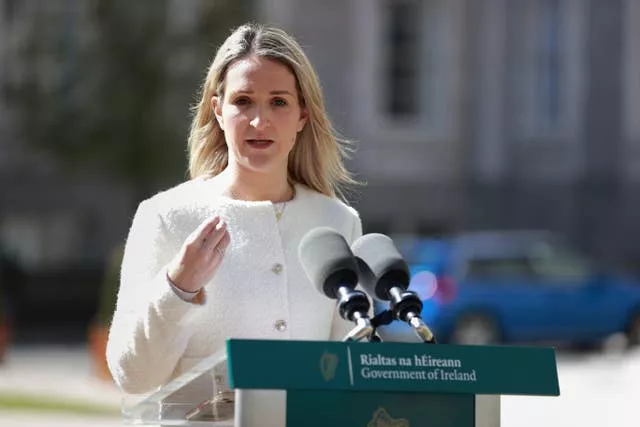A claim by the Minister for Justice that 80 per cent of asylum seekers are coming into the Republic from the North is not based on data, evidence or statistics, the Tánaiste has said.
Micheál Martin made the remarks after Helen McEntee last week claimed the number of asylum seekers crossing from Northern Ireland into the State is now “higher than 80 per cent” following a shift in migration patterns in recent months.
The figure has since been questioned by human rights and refugee organisations.
It comes as UK and Irish ministers are meeting in London following a fall-out over migrants travelling from Britain to Northern Ireland and into the Republic.

Asked about the evidence for the claim on Monday, Mr Martin said it was “clear from the presentation of migrants” that there was a change in where they came from.
He added that the Department of Justice had a “perspective” that there had been an increase in the number of arrivals through Northern Ireland.
Speaking to reporters at the British-Irish Intergovernmental Conference, Mr Martin said: “On the 80 per cent and the evidence: Over a while, I think the Department of Justice officials would say – and it’s not statistical, it’s not a database or evidence base – but it is very clear from the presentations of migrants that there’s a change in the nature of where migrants have come from, and that’s the sense and the perspective that Justice have on this.
“Increasingly over the last year or two, there’s been a shift. If you remember, all the earlier commentary was on people coming in on planes without documentation and so on.
“That has lessened somewhat and there’s been a switch in terms of the pattern of migration, that’s the sense from our Justice officials.”
On Friday, Taoiseach Simon Harris said the figures provided by Ms McEntee were based on the number of people registering at the International Protection Office (IPO) in Dublin.
However, representatives from the Irish Refugee Council and the Committee on the Administration of Justice cast doubt on the figures.

Nick Henderson, chief executive of the Irish Refugee Council, said: “We don’t know how the Department of Justice came to the 80 per cent figure and, as far as we know, has not published its methodology.
“Just because a person has not applied for protection at an airport or port it does not automatically mean the person has crossed the border from Northern Ireland.
“A person may pass through immigration control and then apply for protection at the IPO.
“They may not want to apply at the airport or port because they think they will be placed back on the flight and returned, putting them at risk of persecution.
“Also, a person may also be here with one status, eg as a student, but due to a change in circumstances, like a war in their country, need to apply for protection.
“For example, we have supported people from Gaza in this type of situation. This is known as ‘sur place’ refugees.”
@DeptJusticeIRL, as far as we know, have not published evidence to support 80% figure.
Just because a person does not apply at airport, doesn't mean they came through NI.
A person may apply directly at the IPO.— Irish Refugee Council (@IrishRefugeeCo) April 27, 2024
Daniel Holder, director of the Committee on the Administration of Justice, said he is “sceptical” of the claims put forward by the minister.
“When you look at what the Department of Justice said, they said the border wasn’t monitored routinely and the 80% seems to be based on the fact that a lot of international protection applications are happening in-country, in the Mount Street office rather than happening at ports and airports.
“But there’s a broad range of reasons why that would be the case. A lot of people make their asylum claims in-country and not at ports, they don’t realise you need to do it at port.
“Or take, for example, if someone who’s in Ireland, not as a refugee but as a medical student, they weren’t in need of international protection when they arrived. But then something happens.
“They’re from a very undemocratic regime, a family member gets arrested, gets tortured, gets detained, and they know they’re going to be in a similar risk if they go back, and at that point is the point when they seek international protection.
“So, we’re sceptical. This isn’t the first time this type of claim has been made. When the British government’s Rwanda policy was launched a couple of years ago, back in 2022, a very similar claim was made that was treated with great scepticism by the ESRI.
“[The ESRI] urged that it was treated with quite considerable caution because not only were in-country applications not really indicative of how many people were crossing the land border, but equally there were many other push factors that will lead into increases in international protection applications rather than the UK policy.”







